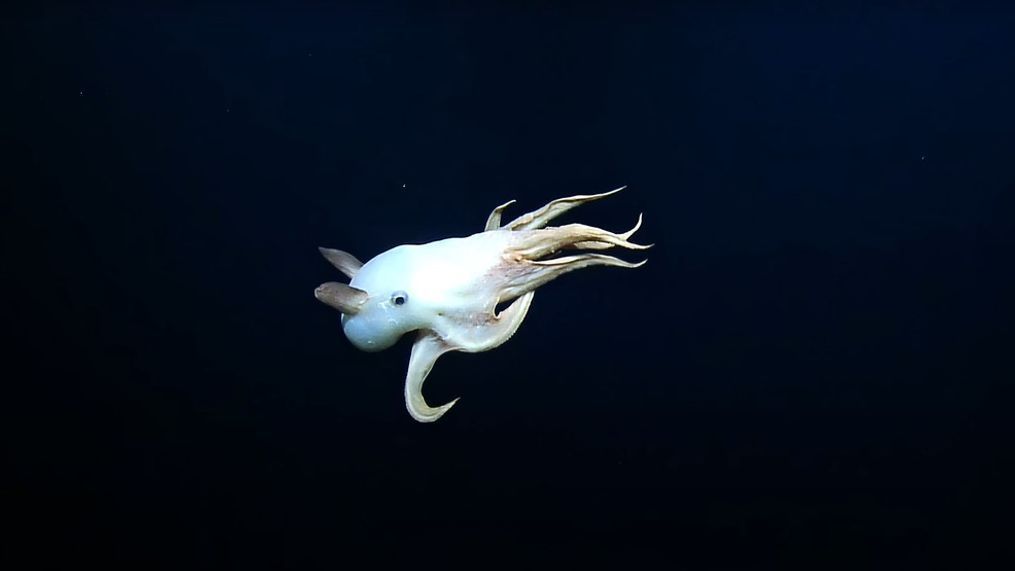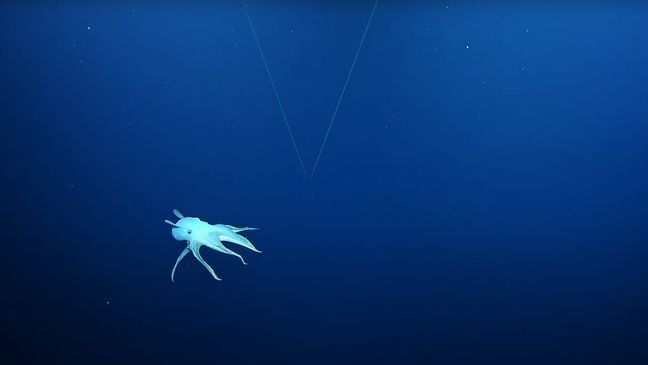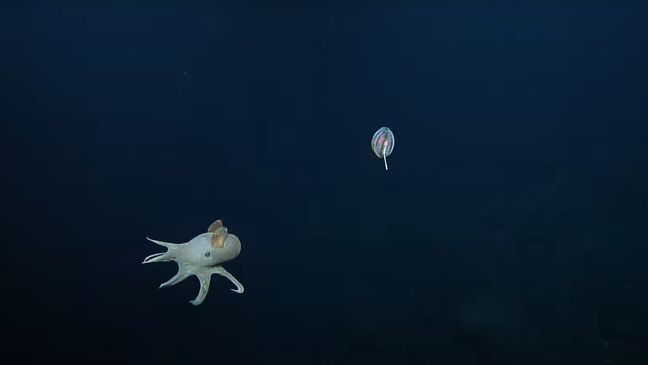NOAA scientists spot elusive Dumbo octopus in Hawaii's marine monument
PACIFIC OCEAN (KOMO) — It's not often that we get a glimpse of animals that live deep beneath the surface of the ocean. The mysterious dumbo octopus was spotted by National Oceanic and Atmospheric Administration (NOAA) researchers a mile underwater in the Pacific Ocean.
NOAA scientists said they spotted the deep-sea octopus far below the surface while exploring Woollard Seamount, roughly 40 nautical miles north of Holaniku during the Ala 'Aumoana Kai Uli (NA154) expedition.
RELATED | Mysterious golden orb discovered in deep sea exploration stumps NOAA scientists
The octopus is nicknamed “Dumbo” because of its large ear-like fins that resemble the elephant from the 1941 movie Dumbo. These fins and webbed arms help it swim through the water, according to NOAA, and what looks like the head is called the mantle, a muscular bag that holds all the body organs and gills.
Enjoy up-close views of its textured and somewhat translucent skin while making “eye contact” with this cirrate cephalopod.
Many deep-sea octopuses can live a long time, much longer than their shallow counterparts, according to NOAA. Scientists believe this round and cute animal, the world’s deepest-ranging octopus, can live from three to five years. NOAA said these neutrally buoyant invertebrates navigate the water by slowly flapping their ear-like fins, using their eight limbs to steer.
RELATED | Historic $82M funding boost aims to save North Atlantic right whales from extinction
The Woollard Seamount and Holaniku are part of the Papahanaumokuakea Marine National Monument (PMNM), a World Heritage-listed U.S. National Monument encompassing 583,000 square miles. It was established in 2006 by the George W. Bush administration and then expanded in 2016 by President Barack Obama.
The islands, atolls, and seamounts in PMNM were created by the same hot spot in the Earth's crust that formed the Hawaiian islands.
NOAA said PMNM seems to be home to some of the most beautiful dumbo octopuses in the world. That holds true in another NOAA video uploaded a couple of days earlier.
While exploring an unnamed seamount in PMNM, NOAA researchers said they spotted another Dumbo octopus more than 5,500 feet below the surface.
RELATED | Giant Pacific octopus washes up on California beach
Little is known about the deep-sea octopods, according to NOAA. It is unclear how good their vision with their big, bulbous eyes and scientists are still unsure of the purpose of the small sense organs on their arms.
While past expeditions have increased baseline knowledge of the deep-water resources in the PMNM, NOAA said large areas remain completely unexplored.
RELATED | Dive into the real-world Animal Crossing adventure this fall at the Seattle Aquarium
NOAA said the NA154 expedition gathered data urgently needed to address local management and science needs of PMNM, including a better understanding of the deep-sea natural and cultural resources, biogeographic patterns of species distributions, and seamount geologic history.




